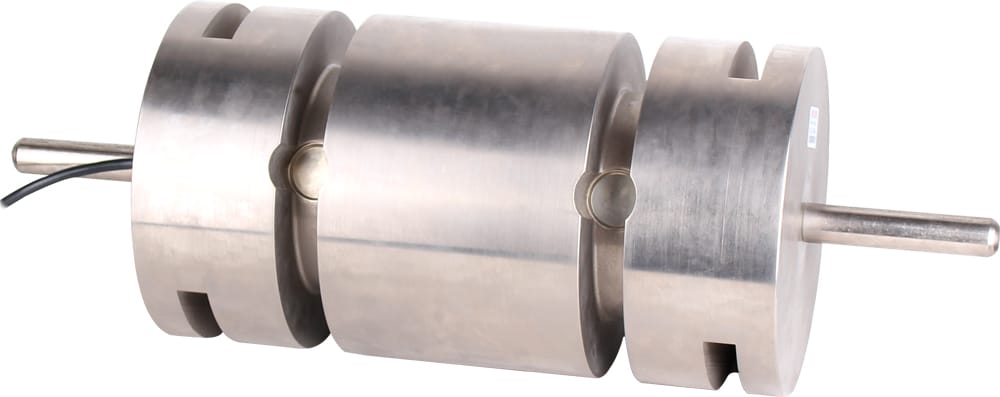
The process of measuring the size of weight or force dates back as far as 3500 BC when the Ancient Egyptians civilization adapted a tool called “The Equal Arm Balance.” Over the years, force and weight measurement has evolved to become part and parcel of domestic, commercial and industrial applications and other fields. Its importance in the world has led to the invention of modern force and weight measurement instruments. Improvements in these instruments’ precision have employed many through generations.
This article gives important information and links to resource guides about various force and measurement instruments, their general applications, Certification standards and markings, instrument Original Equipment Manufacturers (OEMs), and careers.
Force and Weight Measurement Instruments
Load Cells
Load cells convert physical force to an electronically readable output signal that, when connected to some form of user interface, gives a measurement of the force. There are several types, each designed for a specific application. The names indicate the physical shape or design of the load cell, and are described further in the article An Overview of Load Cells.
- Single-ended shear beam
- Double-ended shear beam
- S-Beam
- Single point or platform
- Canister/Disk
- Planar beam
- Tension link
- Load Pin
- Miniature Load button
Amplifiers and Conditioners
These filter noise, amplify the naturally small output signal of a load cell, and condition frequencies for accurate sampling in the case where an analog output signal from a load cell is converted to digital. See our product lineup for examples.
Summing Junctions
These devices combine the outputs of several load cells into one output. Tacuna Systems offers several that accommodate from 2 to 12 connections.
User Interfaces
These convert output signals to a human-readable form. Examples (with links to our product line) include:
- Printers
- Hard-wired digital screens
- Wireless Apps
- Pressure Gauges
Scales
These devices integrate force measurement components (from load cell to readout) to function as a standalone device when weight measurement does not need to be incorporated into a separate system such as a control system. Tacuna Systems offers several in our product line to serve various industries.
Force and Weight Measurement Certification Standards and Markings
In the world of force and weight measurement, various certification standards and markings exist to ensure that an instrument has undergone strict development and testing for accuracy. Examples of these markings appear under all products in our Tacuna Systems catalog. For more information on each described below, click on the subheading link.
ISO
ISO stands for the International Organization for Standardization. It develops and publishes international standards for a wide range of technological components. It should be noted that ISO does not provide certification or conformity assessment for products and instruments. However, it does provide a central resource for other common standards organizations that do provide them. Some of the popular ISO standards are ISO 9001 Quality Management, ISO 14001 Environmental Management and ISO/IEC 27001 Information Security Management.
RoHS
RoHS stands for Restriction of Hazardous Substances. The RoHS restricts the use of hazardous materials found in electrical and electronic products. All applicable electrical or electronic products, equipment, sub-assemblies, cables, components, or spare parts in the European Union market must pass RoHS compliance. The RoHS specifies maximum levels for some restricted substances such as Lead, Mercury, Cadmium, Hexavalent Chromium and many more. This resource gives the various RoHS steps to certification, RoHS product categories and restricted substances.
CE
“CE” is the abbreviation of the French phrase “Conformité Européene” which translates to “European Conformity” in English. This marking shows that the product complies with the requirements of relevant European health, safety and environmental protection legislation. The link in the section heading leads to information on the importance of a CE marking, the general principles of the CE marking, what products need a CE marking, how to obtain the CE marking and more.
NTEP
NTEP is the abbreviation for National Type Evaluation Program. This program requires original equipment manufacturers and industries to submit their prototype weighing devices for evaluation against its certification criteria. The certification means the device meets the tolerances associated with the intended final use in the marketplace.
OIML
OIML refers to the International Organization of Legal Metrology (again, the acronym is from the French title). Legal metrology is the application of legal requirements to measurements and measuring instruments. The basic role of the OIML is to create global standards for metrology legislation. Discover the mission of OIML, the issues of OIML, the various international systems, the new OIML certification systems, emerging metrology systems and many more through the link in the subheading.
Other Standards
Certification bodies besides those explained above also approve the use and sales of force and weight measurement instruments. These include the American National Standards Institute (ANSI), American Association for Laboratory Accreditation (A2LA), National Supervision and Inspection Center for Explosion Protection and Safety of Instrumentation (NEPSI), International Aerospace Quality Group (IAQG), Underwriters Laboratories (UL), and Canadian Standards Association (CSA). Each acronym in this paragraph provides a link to these bodies’ web sites.
As seen above, most standards originate from the country where the product is to be used. However, a global economy drives some standard bodies to have a global reach of influence.
Force and Weight Measurement Study Guides
This section links to various study guides for learning more about force and weight measurement, including published articles, blogs, journals and books.
Blog Articles
- Questions and Answers This National Physical Laboratory (NPL) page contains short tutorials on a variety of engineering topics. Historical articles include a history of weights and measures, explanations of transducers, and a introductory guide to measurement in engineering.
- Force Measurement Science: This page links to a set of articles by Tacuna Systems explaining the basic concepts of force measurement, load cells, calibration, and other important topics.
Journal Articles and Manuals
- Legal Metrology Training for the Weights and Measures Official: This training manual by the California Department of Food and Agriculture gives an overview of the history of weights and measures, the units of the English and SI systems and their conversions, and an overview of standards bodies governing this discipline.
- Beginner’s Guide to Measurement In Mechanical Engineering: This NPL resource discusses measurement best practices, tolerances and error calculation.
- Force Measurement: This resource gives a short historical background on force measurement, the description of both analog and digital strain gauge load cells, and the factors that may influence the choice between a digital load cell and an analog load cell for a specific weighing application. (Requires an account.)
- Bridge Measuring Circuits In The Strain Gauge Sensor Configuration: This article is written by Jelena Manojlovic and Predrag Jankovic. The aim of the paper is “to present the strain gauge in conjunction with various measuring circuits, especially in a Wheatstone bridge configuration.” It defines important concepts such as stress and strain and gauge factor, explains the types of bridges used for strain measurements and how to connect them, and gives an interesting example of how tensile forces affect the resistance of strain gauges.
Books
- An Introduction to Stress Analysis and Transducer Design Using Strain Gauges: Written by Karl Hoffman, this work explains the different types of strain gauges that exist, their operating principles, and how to incorporate each device in a measurement system to obtain a precise result. It also defines terms associated with strain gauges, and concludes with a discussion on calibrating equipment and how to reduce or eliminate force measurement errors.
- Instrumentation Measurement And Analysis: The authors of this book, B.C Nakra and K.K Chaudhary, present in a lucid format the three main concepts of instrumentation: instrumentation principles, measurement techniques and data analysis. The book was written from the perspective of extensive experience teaching and conducting research in the field of instrumentation.
- The Instrumentation Reference Book: The majority of this book, edited by Walts Boyes, is an introduction to the many technical aspects of instrumentation. It also has a portion covering commercial aspects including manufacturers. This book generally takes a broader view of force measurement; however it does contain important basic information as well.
Careers in Force and Weight Measurement
Advances in modern day technology have led to improvements in the design and precision of force and weight instruments. This has created jobs and careers, as highly trained personnel and staff is needed to drive the market for these instruments. The following are few of these roles in the force and weight measurement industry.
- Electrical Engineer
- Product Quality Engineer
- Senior Support Engineer
- Sales Representative
- Sales Engineer
- Calibration Technician
- Machine Operator
- Production Assembler
- Product Manager Etc.
These roles offer career prospects primarily in the fields of Engineering, Sales and Manufacturing.
These are few job search websites beyond LinkedIn, ZipRecruiter and the like that provide job listings in weights and measurement technology:
Force and Weight Measurement Original Equipment Manufacturers (OEMs)
Below are links to some of the world’s top original equipment manufacturers of force and weight measuring instruments and tools. These resources give guidance in selecting the right product for the desired application.
- Tacuna Systems: We specialize in tools for sensing, data acquisition and controls and strive to deliver exceptional product support. Our portfolio of products includes load cells, amplifiers and conditioners, calibration weights, load cell accessories, load cell calibration services, readout and load cell indicators, scales and accessories, strain gauges, summing junctions, weigh module and mount weighing readout pointers.
- AmCells: This company manufactures and supplies standard load cells that have capacities ranging from fractions of a pound to in excess of several hundred thousand pounds. They also offer custom designed load cells to match customer needs.
- LW Measurement LLC: This is a force and weight measurement solutions company located in Rohnert Park, California. The company holds several design patents on their LFS and MediCan Scales; also it holds software patents on their AnyCal software. Their product line includes a variety of scales and load cells.
- ANYLOAD: This is a U.S. integrated design and manufacturing company that specializes in the development and production of force measurement solutions for static and dynamic forces. Their list of products includes scales, load cells, weigh modules, amplifiers, junction boxes, hardware and accessories.
- OMEGA Engineering: OMEGA Engineering provides process measurement and control systems. The company prioritizes precision manufacturing, design and custom engineering, calibration and quality assurance.
- VPG Transducers: This is a Force Sensors Product Group of the Vishay Precision Group Company. It includes brand products such as Tedea-Huntleigh, Sensortronics, Revere and Celtron. They all provide weighing and force measurement products using advanced strain gauge technology. Its product portfolio includes strain gauge load cells, weigh modules, force sensors, electronics, bonding services, and custom solutions.




